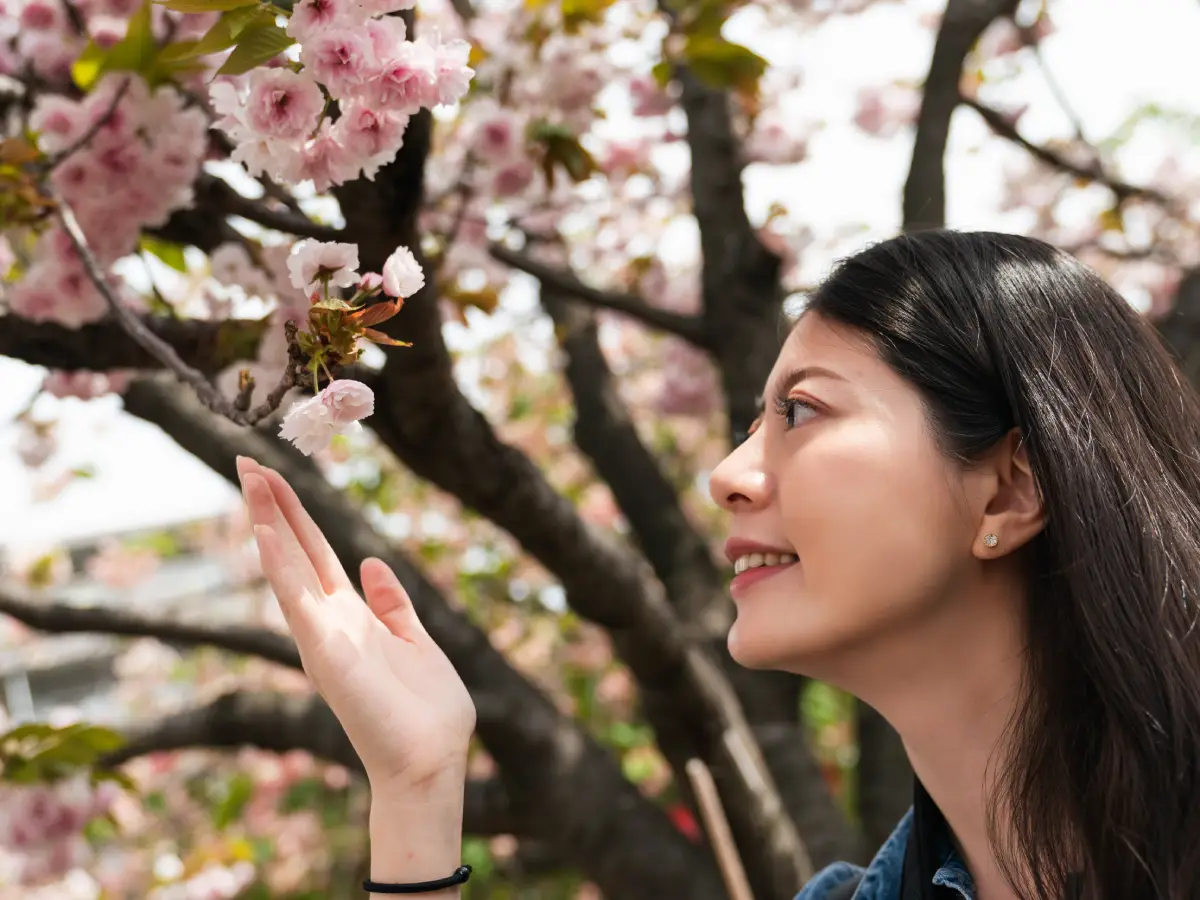
Cherry blossom: discover hanami, the ancestral Japanese ritual
Summary of this article
Hanami, an age-old ritual
In Japan, observing cherry blossoms is called “hanami” (花見), literally “looking at the flowers”.
This tradition dates back over a thousand years, with the earliest written records dating from the Heian era (794-1185), according to historians at Kyoto University.
Initially, it was the nobility who gathered under the cherry trees to compose poems and meditate on the fleeting beauty of the blossoms.
Emperor Go-Daigo (1288-1339) already organized festivities under the cherry trees, as reported in the chronicles of Taiheiki, a 14th-century historical text.
It wasn’t until the Edo period (1603-1868) that this custom was democratized, becoming a popular festival where all social classes gathered to picnic under the flowering trees.
A philosophy in every petal
What makes cherry blossoms so special is their brevity: on average, they only last a week, sometimes less if the wind or rain get in the way.
This characteristic makes them the perfect symbol of the Japanese concept of “mono no aware” (物の哀れ), a bittersweet awareness of the impermanence of things.
Dr. Haruo Shirane, Professor of Japanese Literature at Columbia University, explains in his book “Japan and the Culture of the Four Seasons” (2012) that this appreciation of the ephemeral is rooted in Japanese aesthetic sensibility and has profoundly influenced art, literature and even gardening.
Ornamental cherry varieties: an extraordinary botanical heritage
The most common ornamental cherry is undoubtedly Prunus serrulata, commonly known as Japanese cherry. But did you know that there are over 400 different cultivars of flowering cherry?
Some are the fruit of centuries of selection by Japanese gardeners.
According to Dr. Naomi Oreskes of Japan’s National Institute of Agronomic Research, the oldest varieties, such as ‘Yamazakura’ (Prunus jamasakura), are indigenous to Japan and have been around for thousands of years.
Remarkable cultivars you could introduce to your garden include :
- Somei Yoshino’: the most popular variety in Japan, with pinkish-white flowers.
- Shirotae’ (Mount Fuji): pure white double flowers
- Kiku-shidare’: weeping habit with bright pink double flowers
- Kanzan’: very double, dark pink flowers, probably the most widespread in Europe.
Cultivate your own hanami show
If you’d like to create a corner of springtime contemplation in your garden, here are a few practical tips validated by the Société Nationale d’Horticulture of France :
Ornamental cherry trees appreciate :
- Well-drained, slightly acidic to neutral soil (pH 6.5-7)
- Sunny to semi-shady exposure
- Regular but moderate watering, especially during the first two years after planting.
- Ideally, plant between October and March, outside the frost period.
Allow sufficient space – at least 5 meters for the larger varieties – as these trees can reach 8 to 10 meters in height at maturity.
Contrary to popular belief, most ornamental cherry trees are quite hardy, withstanding temperatures as low as -15°C, making them suitable for most regions of France.
A lesson in gardening… and in life
When we look at cherry blossom trees, we are perhaps taught the most beautiful lesson nature has to offer: the most intense beauty is often the one that doesn’t last.
In our fast-paced world, where we strive for permanence, cultivating and contemplating these trees invites us to take a meditative pause.
As British botanist Val Bourne so aptly wrote in her book “The Living Jigsaw” (2017): “Gardening teaches us patience and acceptance of natural cycles. Cherry blossoms are perhaps the most perfect expression of this philosophy.”
So this spring, whether in your garden or on a walk in the park, take the time to stop under a cherry blossom tree.
Observe the petals fluttering in the wind, as so many generations before us have done. In this moment of contemplation, you may well find an unexpected serenity and a deep connection with the eternal rhythm of the seasons.


Laisser votre commentaire